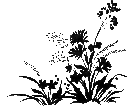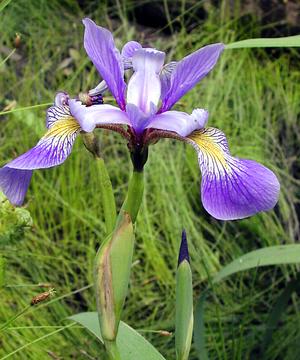 |
The Preserve |
News and Events |
Natural History |
The Trail |
Restoration |
Library |
Organization |
Monitoring |
|
Todmorden Mills Wildflower Preserve
|
Nature NotesYour nature guide for the week June 7-June 13Spring's bounty is beginning to be realized as young birds and mammals leave their nests and begin a more independent life. And the insects are on the rise.Birds
WildflowersAround the edges of the pond and oxbow, the irises are in full bloom: the native Blue Flag which has been planted as part of the restoration effort; and the non-native Yellow Iris, which was planted accidentally in the fall of 2002. An excellent spring growing-season this year has resulted in a lush meadow, knee-high in young goldenrod and milkweed plants. These native species have to compete with a pernicious invader called Dog-strangling Vine which is already flowering and stands about a metre tall. Trees and ShrubsAlong the woodland trail you will find the elegant Alternate-leaved Dogwood flowering. Notable for a yellowy bark and horizontal branching (hence the common name Pagoda Dogwood, used by nurseries), it starts to bloom slightly later than the shrubby Red-osier Dogwood. Most trees now have fully-expanded leaves, and these are starting to show signs of attack from herbivores which eat the leaves or suck the sap. A Silver Maple, planted at the south end of the Oxbow six years ago and now about four metres high, has a spectacular leaf infestation. The blood-red "warts" are Maple Bladder Galls caused by mites. FrogsAdult male Green Frogs are setting up territories around the perimeter of the pond in preparation for mating. Listen for the characteristic "glug" call of the male. InsectsAt first glance the frothy bubbles lodged in the leaf axils of young goldenrod and clover look like spittle. But look closely, and you will find the green nymph of Meadow Spittlebug hiding inside and tapping the plant's sap. The nymphs, in turn, are prey for birds, especially Red-winged Blackbirds and House Sparrows, which are busy collecting "beakfuls" of the bugs for their offspring. MammalsYoung Cottontail Rabbits, just out of the burrow, are present in the meadow behind the parking lot. The best time to view the rabbits is early morning and late afternoon. Young Chipmunks are also making their first appearance above ground. Nature Notes is researched and written by Mike Dennison and Alejandro Lynch, and is published each week by Hopscotch Interactive (www.hopscotch.ca). In addition to this online version, Nature Notes is available as a print-friendly PDF and as a text-only email version. Please contact Mike Dennison to receive these, or for more info (tel: 416-696-7230, email: dennison@hopscotch.ca). |
| Copyright © 2003-2004 Todmorden Mills Wildflower Preserve |
